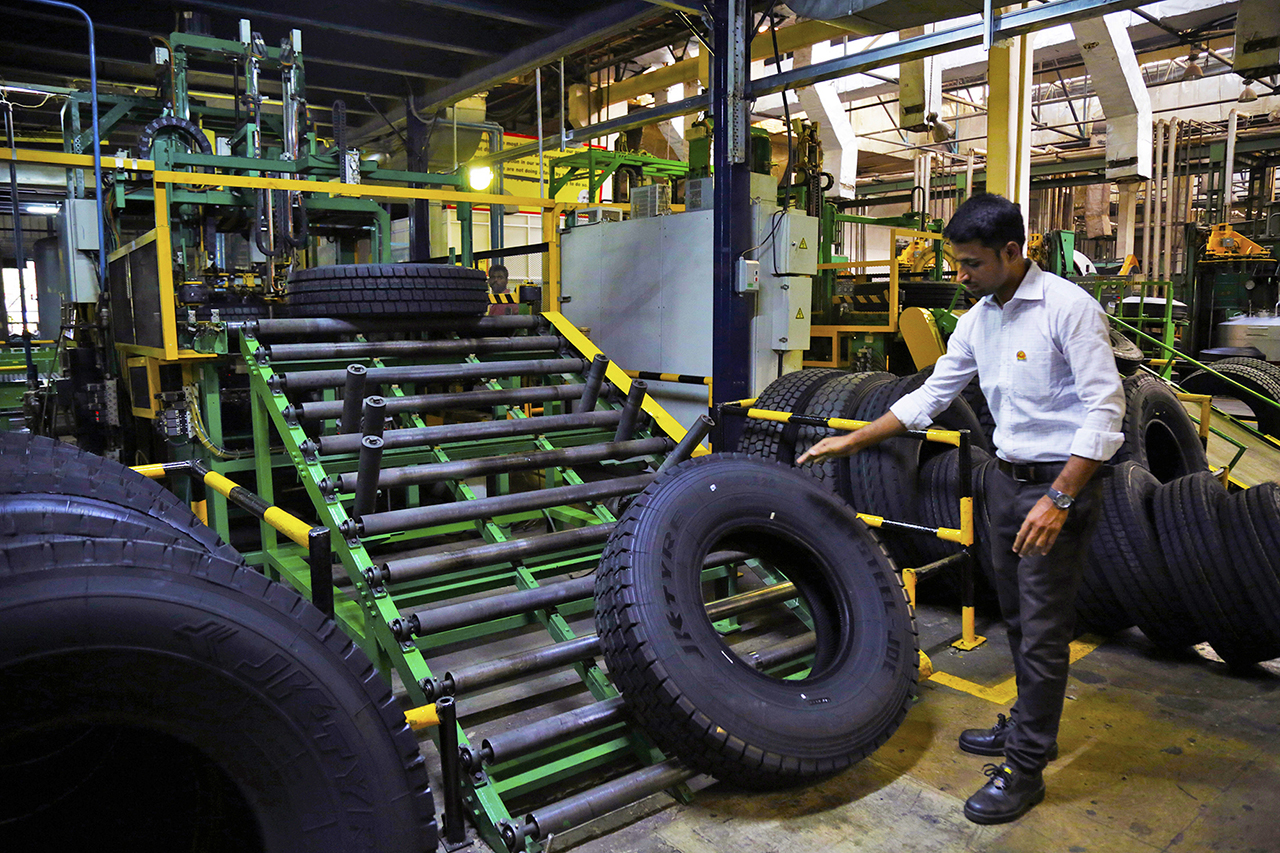The Indian tyre industry has not been adequately acclaimed for scripting a success story in areas such as exports, research and development and innovation. It is time that the industry’s key contribution gets adequately noticed as the wheels that turn the nation’s economy, writes Anshuman Singhania, Chairman, Automotive Tyre Manufacturers’ Association (ATMA) and Managing Director, JK Tyre and Industries

The last year and a half will be reckoned as one of the most challenging phases not just for the Indian industry but for all spheres of life. The economy was already in the throes of a slowdown when the outbreak of the pandemic in March last year queered the pitch further. Despite the headwinds across all segments of the economy, the tyre industry was certainly among the topmost sector, which was a true example of much suppleness in the face of disruption and strife. In fact, this was not the first time when the tyre industry displayed resilience to bounce back after a challenging phase. Last year, the growth plummeted in the first quarter in view of the nationwide lockdown that witnessed the shutdown of automotive and tyre plants for a considerable period of time.
However, the tyre industry staged a strong recovery in the subsequent quarters of the year. Similarly, during the second wave of the pandemic in the current year, the tyre industry too witnessed a slowdown in the months of May and June with sporadic lockdowns in various parts of the country disrupting the supply chains. However, in the second quarter, as the process of unlocking began, the industry gathered pace and the wheels started rolling in right earnest. While supplies to OEMs came down in view of the stressed automobile industry, good replacement demand for tyres following infrastructure push and curbs introduced by the government on indiscriminate import of tyres helped the industry ride through the downturn successfully. Exports have been another growth driver for the tyre industry during these turbulent times. Nearly 25% of the domestic tyre production was exported in FY21.
Beacon of Indian Manufacturing
The industry, especially the manufacturing sector, is evolving with newer technologies such as Industry 4.0, the use of artificial intelligence (AI) and move towards digitization, amongst many others. The landscape in the automotive industry is undergoing a metamorphosis of sorts with a major thrust of making the automotive landscape far safer and environment-friendly. The tyre industry, too, is continuously enhancing capabilities with a view to meet the emerging and stringent requirements posed by the automotive industry and, at the same time, making rigorous efforts towards environmental protection, durability and safety. A few of the critical and key areas in technology growth include low rolling resistance, lower noise, and excellent ride and handling.
Much of the technological development is directed towards meeting the challenges of new-age vehicles, especially the electric vehicle (EV) mobility where low noise, least rolling resistance as well as excellent torque resistance become critical. The tyre industry in India has come of age in global competitiveness and is offering solutions at par with the global standards. Currently, the industry is spending nearly 1.5% of the turnover on research and development activities to ensure its use of cutting-edge technology matches world-class standards. However, it is unfortunate that the Indian tyre industry has remained one of the less celebrated stories of excellence in the manufacturing landscape of India.

The industry has not been adequately acclaimed for scripting a success story in areas such as exports, research and development and innovation. It is time that the industry’s key contribution gets adequately noticed as the wheels that turn the nation’s economy. Unlike several other sectors, the tyre industry is self-sufficient in India with indigenous capabilities to manufacture practically all kinds of tyres – from a moped tyre to a mammoth off-road tyre. Not many countries in the world can boast of this capability. With a significant investment of around Rs 50,000 crore by the tyre companies in creating world-class capacities and research and development activities in recent years, the industry deserves much better appreciation for its manufacturing prowess.
Sterling Export Performance
In one of the robust export performances in the automotive space, tyre exports from India went up by 10% in value terms in FY21 to touch Rs 14,097 crore. The spectacular rise in exports of tyres during a challenging year bears testimony to the resilience of the industry to bounce back despite a tough environment. In fact, tyre exports from India have gone up by 60% in the last five years from Rs 8,825 crore in FY16 to Rs 14,097 crore in FY21. Indian tyres are being exported to over 170 countries in the world, including some of the most discerning markets in North America and Europe.
The top five export markets for Indian tyres in FY21 were the US, Germany, France, Italy and the UK. The US continues to be the largest market for Indian tyres, accounting for 17% of the total tyres exported from the country during the year. Despite supply chain-related challenges, the tyre industry is hopeful of maintaining a tempo in tyre exports as both global growth and global merchandise trade volumes are expected to increase in 2021. This will further help the manufacturers continue to target newer markets for exports.
Espousing the Spirit of Self-Reliance
In its modest way, the tyre industry espouses the spirit of ‘Aatmanirbhar Bharat’ with production capacities ahead of the domestic demand curve while widening the footprint in the export markets. Without any doubt, India is in a sweet spot as far as tyre manufacturing goes. Seasoned entrepreneurship, availability of skilled manpower, availability of natural rubber plantations and products surpassing international quality benchmarks – all these ingredients contribute to make India a hub for tyre manufacturing in the world.
The job creation potential of the tyre industry is huge in view of a rich value chain extending from rubber planters to tyre mechanics. The industry supports over 1 million natural rubber planters since as much as 75% of this rubber produced in the country is consumed in tyre manufacturing. Another million or so are engaged in tyre plants, tyre retreading, those employed at tyre dealerships and tyre repair services across the length and breadth of the country.
Continued Challenges
Raw material security continues to be a challenge with the tyre industry in India. For instance, the domestic production of natural rubber which is the key raw material is short of its requirement. The Rubber Board has certainly made sincere efforts to increase the production and productivity of natural rubber in the country; however, a significant production-consumption gap of over 40% continues to exist. A project for supporting the development of new rubber plantations in the northeast region and improving the quality of processed forms of rubber has been finalised under the guidance and active mentoring of Minister for Commerce and Industry Piyush Goyal. The project is designed to implement the scheme for developing 2,00,000 hectares of rubber plantations in the northeast region. Apart from natural rubber, the demand-supply mismatch in key inputs like nylon fabric, carbon black and synthetic rubbers is also a cause of concern.
The Road Ahead
The government is working on a strategy to impart a sincere push to its strategy of Make in India to immune the country from external trade shocks while boosting the country’s manufacturing and exports to benefit from emerging world realities. It is all the more important now to identify champion sectors where the country has a much better bet of attaining the ideals of Make in India. These sectors will include the ones which have significant employment potential, have proven credentials in domestic manufacturing and exports, enjoy wide acclaim for quality worldwide, and have the capacity to ramp up and become global leaders. Here, the tyre industry fits the bill squarely. Currently, several countries in the world are looking to reduce their dependence on China for political, economic and strategic reasons. India is being looked upon as a future global manufacturing economy, taking the reins from China, which will not only boost economic growth but will also make way for a new generation of entrepreneurs. And therein is an opportunity to appreciate the tyre industry as a shining example of Indian manufacturing, much like IT or pharmaceutical in the respective spaces in view of advancements in technology, contribution to automotive and transport sectors, job creation potential and growth projections.